Types of Carbohydrates
The Glycemic Index | Other Terms Used to Describe Carbohydrates
How the Body Reacts to Carbohydrates | Adopting a Low Carbohydrate Lifestyle
| Carbohydrates are one of the three primary classes of foods: The other two classes are proteins and fats. When consumed, carbohydrates are converted to glucose, which is the primary energy source in the body (followed by fat and protein). Carbohydrates are found in all foods with the exception of meats and animal fats. The two traditional categories of carbohydrates are "simple" and "complex." |
Types of Carbohydrates
Simple Carbohydrates
Simple carbohydrates are the sugars, such as glucose, fructose, and lactose, found in foods like fruits (fructose), vegetables, dairy products (lactose), and foods made with processed sugar.
 
 
|
Complex Carbohydrates
Complex carbohydrates are composed of the starches and fiber found in whole-grain breads, grains, and legumes.
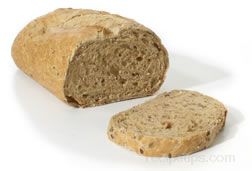 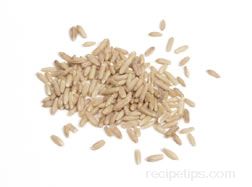
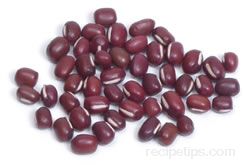 
|
The Glycemic Index
|
In 1981, David Jenkins and Thomas Wolever, researchers at the University of Toronto, published a study suggesting that the "glycemic index" (a measure of how blood glucose levels are affected by carbohydrates), should be used as a basis for classifying carbohydrates, rather than using the traditional system of "simple carbohydrates" and "complex carbohydrates." In general terms, the theory behind the "glycemic index" and "glycemic load" is that when foods rated low on the glycemic index (GI) are consumed, there is a slower, steadier release of glucose in the blood, and when high GI foods are eaten, there is a rapid spike in the blood glucose level. High GI foods are thought to be somewhat less healthy than low GI foods, but they may be desirable for a quick energy burst, especially after strenuous physical activity or for people suffering with hypoglycemia (low blood sugar levels). A diet consisting of mainly low GI foods may lower the risk of developing various diseases, including diabetes, coronary heart disease, and even cancer, because the slower release of glucose results in less oxidative damage to tissues than what is caused by high GI foods.
Refer to the article "The Glycemic Index and Glycemic Load Theory" for additional information. |
Examples of Low Glycemic Index Foods
Most Fruits and Vegetables (Except Potatoes and Watermelon),
Whole-grain Breads, Legumes
 
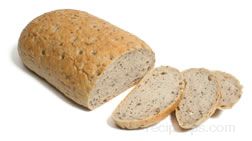 
|
Examples of Medium Glycemic Index Foods
White Sugar, Brown Rice, Candy Bars
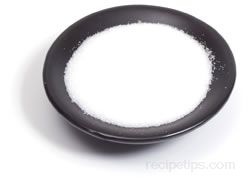 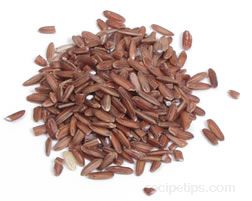
|
Examples of High Glycemic Index Foods
White Bread, Potatoes, Some White Rices, Processed Sugary Cereals
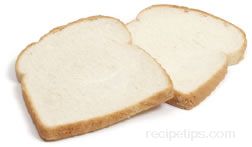 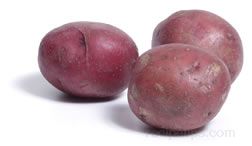
|
Other Terms Used to Describe Carbohydrates
Natural Carbohydrates
Natural carbohydrates are found in unprocessed, whole-food items such as apples, carrots, beans, and brown rice. Natural carbohydrates are believed to cause a smaller rise in blood sugar levels.
 
 
|
Refined Carbohydrates
Refined carbohydrates are found in food items that have been processed, such as crackers, candy, and breads and pastas that were made with white flour. Refined carbohydrates are believed to cause a sharp rise in blood sugar levels.
 
 
|
Good/Bad Carbs
In addition to the carbohydrate classifications of simple and complex; low, medium, and high glycemic; and natural and refined, carbohydrates are often placed into two groups known as "Good Carbohydrates" and "Bad Carbohydrates."
- "Good" Carbs
Foods containing carbohydrates considered to be "good" have not been processed and contain a fair amount of fiber. These food types include oatmeal, whole grain bread, legumes, vegetables, fruit, and sugar-free whole grain cereals.
- "Bad" Carbs
Foods containing carbohydrates considered to be "bad" have been processed (or refined). These food types include white bread, ice cream, candy, and sugary soft drinks. |
How the Body Reacts to Carbohydrates
|
During digestion, the body breaks down the carbohydrates in the food we eat into glucose and then releases the glucose into the bloodstream. Body tissues, such as the brain, use glucose as a vital energy source. Carbohydrates provide the quickest source of energy for your body, but depending on the type of carbohydrate that you have consumed (simple or complex, refined or natural), it may be a short-lived source of energy.
If you have consumed more carbohydrates than your body needs, the glucose will be turned into glycogen and stored in your muscles and liver for future use. When the liver and muscle tissues exceed their capacity for storing glycogen, the excess is converted into fat. This is why proponents of a low carbohydrate lifestyle maintain that if you reduce your intake of carbohydrates, your body will not produce excess glycogen; therefore, your body will not create additional fat.
The Insulin Factor
The pancreas produces insulin, which is the hormone that moves glucose out of the blood and into the tissues where it is either stored or used. The more glucose that enters the bloodstream, the more insulin the body releases. Not only is insulin responsible for distributing glucose, but it also balances your blood sugar level and keeps it at a normal range. It is believed that high levels of insulin promote the storage of fat; therefore, controlling your carbohydrate intake prevents your body from producing excess insulin, thereby preventing your body from storing excess fat.
Many experts contend that a number of carbohydrate-rich foods are absorbed rapidly into the bloodstream, inducing the release of excess insulin. This excess insulin causes a rapid drop in blood glucose levels, which is believed to stimulate hunger and cause a rapid decrease, or "crash," of energy. You are then likely to crave even more carbohydrates.
A high insulin level is also believed to play a contributing role in aggravating certain diseases, such as diabetes, high cholesterol, blocked coronary arteries, high blood pressure, strokes, and obesity. Controlling spikes in insulin may help to alleviate some of these health risks.
The High Protein Factor
Protein, fat, and carbohydrates provide your body with the energy (calories) it needs. If you reduce the consumption of carbohydrates, you need to increase your intake of protein and/or fat to maintain the energy required. Unlike carbohydrates and fat, protein is not stored in the body; therefore, when adopting a low carbohydrate lifestyle, daily consumption of high protein food is essential. In addition, eating food high in protein is thought to promote feelings of fullness and satisfaction, which is crucial to weight control. The six major sources of high protein foods are meat, fish, nuts, beans, cheese, and eggs. |
Adopting a Low Carbohydrate Lifestyle
How Much Carbohydrate Should We Consume?
Consumers are inundated with low-carb lifestyle programs. There are so many low-carb diet plans being promoted that it is difficult to know which one to choose. Although each program is different in its approach, all of the programs are united in one basic principal: By controlling your daily intake of starchy carbohydrates and replacing them with high protein foods, you will lose weight, you will not feel hungry, and you will be living a healthy new lifestyle.
Many of the different low-carb diets differ in the amount of carbohydrate should be consumed. Some of the programs suggest a carbohydrate intake as low as 20 grams a day, while others suggest that you consume as much as 60 grams (or even more) of carbohydrates a day. Some time ago, the Institute of Medicine submitted a recommendation stating that the recommended daily allowance of carbohydrates be lowered from 300 grams a day to 130 grams a day for healthy adults and children over the age of four; still well above the levels recommended by low-carb diet plans but far below the level most people have been accustomed to consuming.
Dietary Fiber and a Low Carbohydrate Lifestyle
Although dietary fiber is a carbohydrate, it cannot be fully digested and does not convert into glucose; therefore, it does not raise the blood sugar level when consumed. Dietary fiber slows the entry of glucose into the blood stream, reducing spikes in blood sugar levels. This reduction in the blood sugar level lowers the amount of insulin production, lowering the amount of glucose that will be stored as fat, reducing cravings, and increasing the feeling of fullness.
Most diet programs that promote the reduction of carbohydrates as a weight management tool, allow you to subtract the dietary fiber away from the total carbohydrates stated on the labels of food products. For instance, a food product with a total carbohydrate content of ten grams per serving that also contains four grams of fiber, results in a net total of 6 grams of carbohydrates; therefore, when counting the daily carbohydrate intake for that particular food, you will count six grams of total carbohydrates.
For some followers of a low-carb lifestyle, a reduction of carbohydrates causes constipation and gastrointestinal problems. Increasing the intake of fiber will help to alleviate these side effects. For more information on dietary fiber, refer to the article, "The Role of Dietary Fiber in a Healthy Lifestyle." |
| Note: Various low-carb lifestyle programs also allow you to subtract any sugar alcohols, as they are believed not to affect insulin levels. | |




















